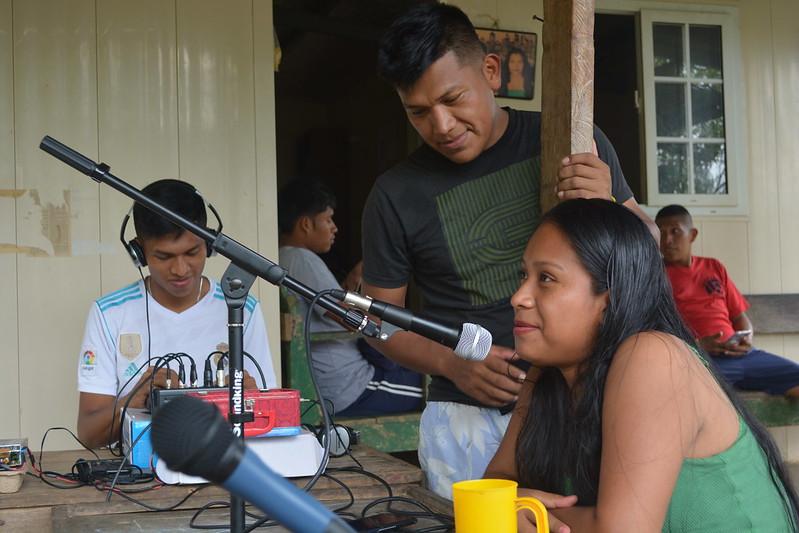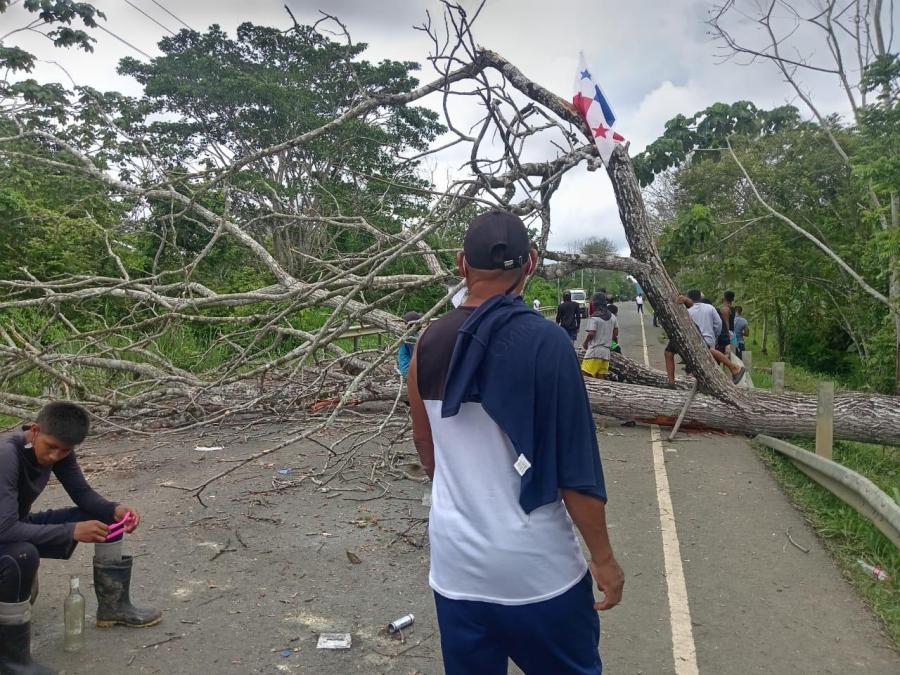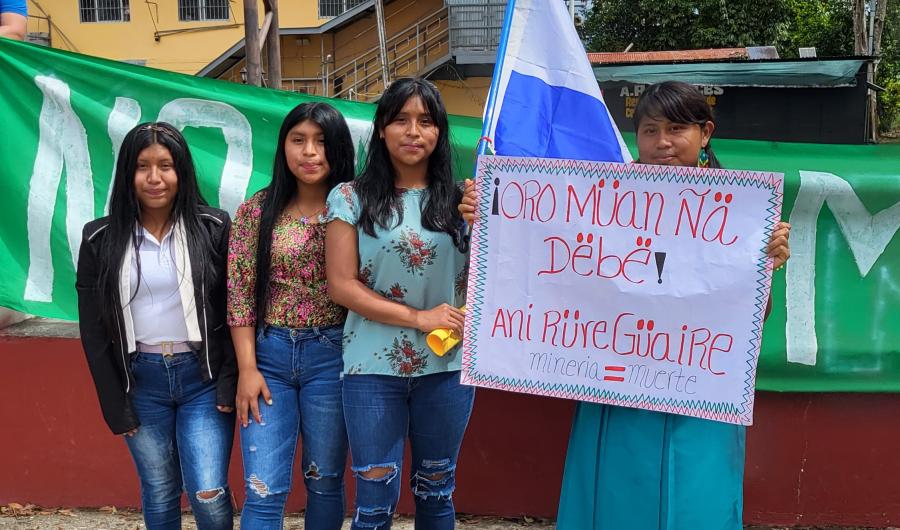
By Nati Garcia (Maya Mam, CS Staff) and Jonathan Gonzalez Quiel (Ngäbe)
For years in Panama, seven Indigenous communities have been working to secure their own autonomous media, including their own community radio stations. But, little progress has been made due to the government's lack of will and the legal vacuum that exists regarding concessions of radio frequencies for Indigenous communities. To address these issues, since 2018, a group of youth in western Panama have been training in the use of radio tools and are a ray of hope to establish the first Indigenous community radio station.
In 2022, Cultural Survival accompanied the Panamanian Center for Social Studies and Action (CEASPA) in an environmental education initiative for the conservation of La Amistad International Park and the Palo Seco Protected Forest where they used radio as a tool for community strategy in environmental management. This initiative was financed by the Small Donations Program of the United Nations in Panama. The purpose of the project was for three communities of the Comarca Ngäbe Buglé to set up their own community radio stations.
In May 2022, Cultural Survival staff visited the Comarca Ngäbe Buglé and learned about the community radio progress and how the youth were leading the process. We were pleased to find that the youth who had been part of Cultural Survival’s radio trainings a few years prior were now the ones managing the station. In 2019 and 2020, Cultural Survival organized two training workshops in community radio for Indigenous youth from the Naso, Ngäbe, Buglé, and Embera nations as part of the Indigenous Community Media Youth Fellowship. From this cohort of youth, the Ngäbe youth have taken the lead in continuing their development and enhancing their skills in community radio.
In our most recent visit, we checked in with the Silico Creek community and learned about their station, Radio Silico Creek 100.2 FM. Radio Silico Creek is made up of six youth who co-manage the station. They shared with us the need to continue training on radio programming and technical maintenance of radio equipment for long term use and the purchase of equipment as they continue to grow. There has been tremendous interest from the community in supporting the youth in their passion and determination to be the first generation to establish a community radio station.
We met Emilsa Abrego, a 21-year-old Ngäbe producer of the program, “The Environment Is Ours,” which runs on Mondays, Wednesdays, and Fridays. She said, “I am truly grateful for the visit you have paid us here…I imagine the trip is quite long, but for this activity, for this organization, you have come once again to cheer us up and see the progress on the project than we have.”
Emilsa Abrego hosting the radio program, “The Environment Is Ours,” on 100.2 FM
As the sole woman on the Radio Silico Creek team, Abrego spoke about her experience in collective decision making where her voice and opinion is respected. “I always say I am proud to be a woman, also for being Ngäbe, because I cannot deny my roots. Many times when you have a radio program, some people feel or say things that go against me, but that is not the idea at Silico Creek Radio. Within the team, when I say something, the boys all agree and they stay with it. There are decisions that when they are made, all the activities, the programs that we are going to carry out are taken together.”
Emilio Aguilar, 33, another team member at Radio Silico Creek, told us that before he understood what community radio was, he thought it was just listening to music and a few programs. He said that organizing the station was somewhat complicated at first; though he felt like a young person he knew there were people younger than him, so he was hesitant to participate. However, Aguilar was eager to learn and wanted to experience something new, so joined the team. He now produces a radio program called "Friends of the Environment” with another youth. He commented that people outside of their community often share positive opinions of their shows and even request to have their events covered and broadcast.
Youth of Radio Silico Creek
At the moment, all of the radio programs at Silicio Creek Radio are focused on environmental issues. However, the radio team aims to develop more radio programs on other topics such as culture, land rights, and revitalization of the Ngäbe language. They have received feedback from the community and have incorporated suggestions in improving the quality of the radio programs. They have also increased their knowledge, capacity, and strengthened relationships with community members: "We have interacted with people with different ideologies, with different projects, and for us, all the contributions are positive. We accept their suggestions and put them into consideration to continue improving.”
The youth at Radio Silico Creek have been leaders in inspiring other youth in the Comarca to become involved in community radio. As part of the CEASPA project supported by Cultural Survival, two other Indigenous communities, Norteño and Filo Verde, have received training in community radio. In May, Cultural Survival also visited the Norteño community. Norteño Community Radio 95.1 FM is based out of an environmental organization, Abrol de Mañana (Tree of Tomorrow), which addresses environmental and territorial issues.
Youth from Norteño Community Radio 95.1 FM
To date, Norteño, Silico Creek, and Filo Verde are the only territories in Panama that have experimented with community radio stations operated by Indigenous youth. They started with a couple of microphones and some basic equipment, but the youth now have broken into the electromagnetic space, generating alternatives to mainstream media and continuing to promote, defend, and maintain their Indigenous worldviews and territories.
Abrego wanted to share a message of encouragement for other youth around the globe: “As a woman, I mainly want to send a greeting to all the young women who are already part of community radio stations in their countries. Here, I am the only one, but I would like to build that network. The message that I leave you with is to keep up the work, because perhaps today we are only here, but tomorrow, in a few years, we may have more opportunities and even become great journalists. This will require work and strength.”


